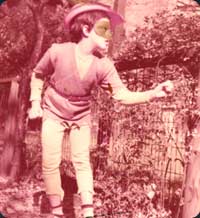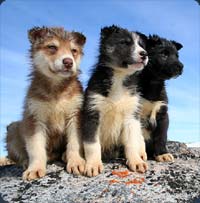|
Just as hunter-gatherers’ close observation of sky cycles, plant seasons, and animal habits brought both life-giving practical advantage and a sense of awe verging on reverence, scientists today both seek to gain benefits from understanding nature and are simply blown away by it. In the course of a fact-checking exchange, paleontologist and anatomy professor Neil Shubin, the author of NH’s February 2008 cover story, “Fish Out of Water,” wrote to me about the morphing of sharks’ gill arches into our own speaking and eating apparatus: “Isn’t this cool? Seeing the basic organization of the head written in these ancient arches is so incredibly sublime.” Joan Strassman, who studies the social amoebae popularly misnamed slime molds, wrote to me, “They are so lovely. I attach a picture for you.”
Yes, it is cool, it is incredibly sublime, and the worms in my pocket were lovely, too.
Around scientists and their work is a larger penumbra of what might be called science geeks, among whom I count myself: people who perhaps lack the temperament or the circumstances to do science, but who follow it as ardently as others follow the Dow, the Red Sox, or the Oscars; who read about it and, if we’re lucky, write about it. In a long career as a freelance writer and editor, I’ve had a few chances to do that, as a book reviewer and, most notably, in the late 1970s for a short-lived magazine called Quest, for which I wrote a journal of a naturalist-guided gray-whale-watching trip in Baja California and a profile of an extraordinary UC Santa Cruz natural-history professor, Kenneth S. Norris, an expert on both deserts and dolphins. One of my great regrets was not being free to accept Ken’s invitation to go out and teach a course on nature writing at UCSC. In the middle of one recent night, feverishly fact-checking, with a sense of mission, our story on the critically endangered little porpoise called the vaquita (“How Now, Little Cow”), I discovered that the scientist who had first described and classified the vaquita in 1958 was... Ken Norris. In my somewhat sleep-deprived state it felt like a message from my friend Ken (who died in 1998) that I had landed in the right place—this conspiracy of scientists and science geeks called Natural History.
Since starting to work here (where as both fact checker and copy editor I sometimes do feel like a factotum, Latin for “do everything”), I’ve got a new pocket: the browser bookmark folder where I stash bits of deep background and tantalizing tangents I come across while fact checking, don’t know what to do with, but don’t want to forget. The name of the bookmark folder: “Wonderful Stuff.” This blog—the publisher’s idea—will be a place to share that wonderful stuff. Welcome. Enjoy. Respond.

~ LWIP

(Annie Gottlieb) |
Comments (add yours!)

Return to February home
|



